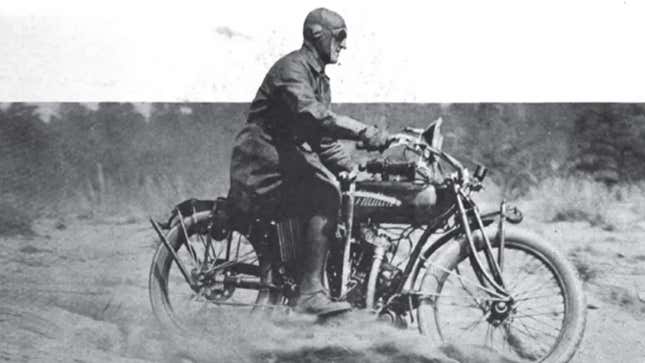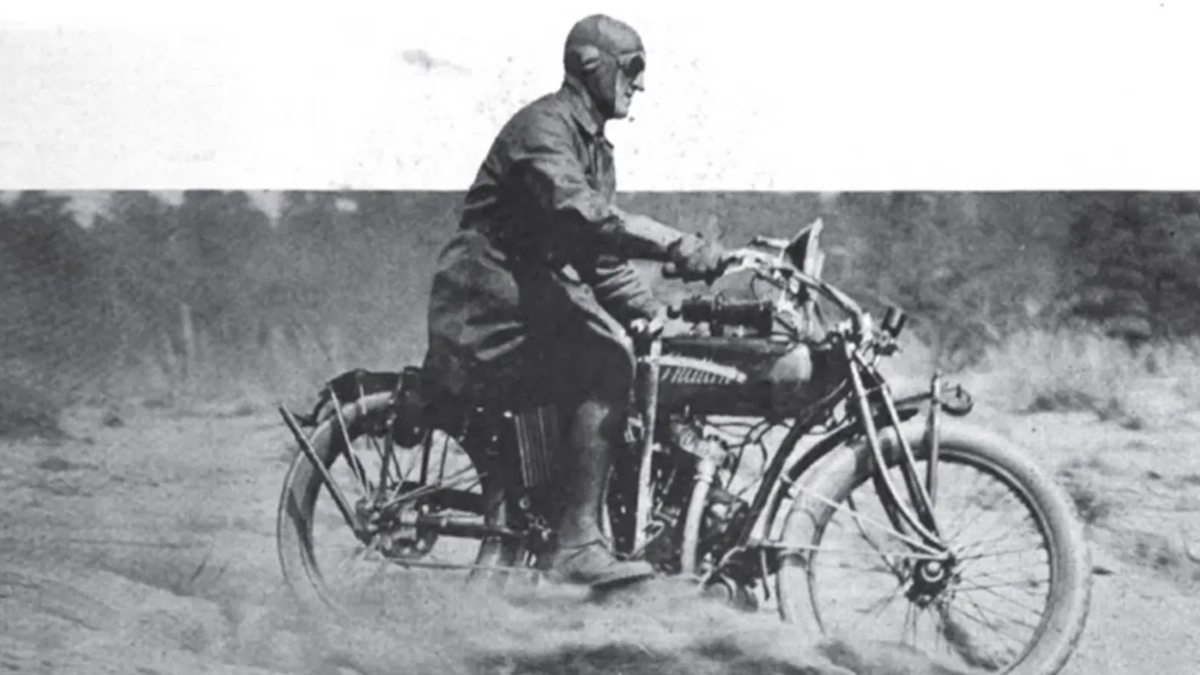
In general the concept of trying to drive across the country at breakneck speeds is old hat. Breaking a bunch of laws and putting a bunch of people at risk on public roadways for thirty seconds of Reddit fame is silly, and doesn’t deserve a second thought. But when you cast your thoughts back to the first major cross-country record setter, you find a guy worthy of your applause. Erwin Baker was an early motorcycle racer daredevil turned long-distance endurance maven, and his 1914 sea-to-shining-sea record stands as one of the most impressive feats in motoring. It should be made into a movie.
Setting off from the San Diego city library on May 5, the breakneck speedster sat astride a shiny new Indian motorcycle. He had 3362 miles ahead of him to reach New York City, and aimed to beat the standing record of 20 days nine hours and one minute. At that time the U.S. roadway system consisted of just 2.6 million miles of publicly accessible roads—around half what exists today—most of it dirt, cobblestone, or brick. The interstate system was still over four decades from beginning.
Baker pushed through California, Arizona, New Mexico, Kansas, Missouri, Illinois, Indiana, Ohio, Pennsylvania, and New York on his run. When all was said and done, he’d made it from coast to coast in 11 days, 11 hours and 10 minutes, smashing the extant record by nine days. Upon arrival a New York reporter wrote that he’d been faster than Casey Jones’ Cannonball Express train, and the nickname stuck. Much has been done in the name of Cannon Ball Baker, but his feats outmatch all that came after him. What a guy.
I just want you to sit and think about what a feat Baker managed. It would be a hell of a challenge in 2024 to ride across the country in 11 days without taking a single modern paved road. It’s damn difficult to do 1,000 miles in a day on a motorcycle for an average human on our modern highways, let alone three in a row. I’d probably take at least four days to make the trip on a bike in 2024. The dude was a machine.
By the 1930s, Baker had moved on to making record attempts in cars, and set his fastest run in 1999 aboard a Graham-Paige Model 57 Blue Streak 8, getting his time down to 53 hours and 30 minutes.







